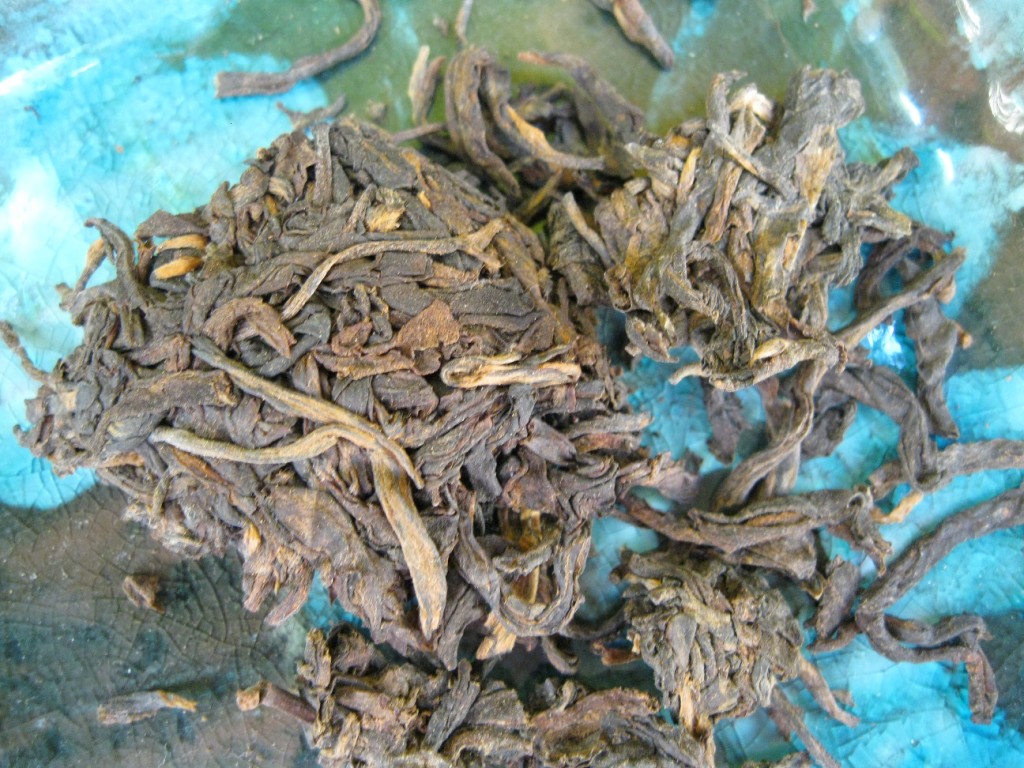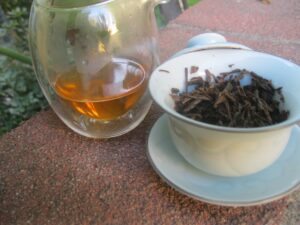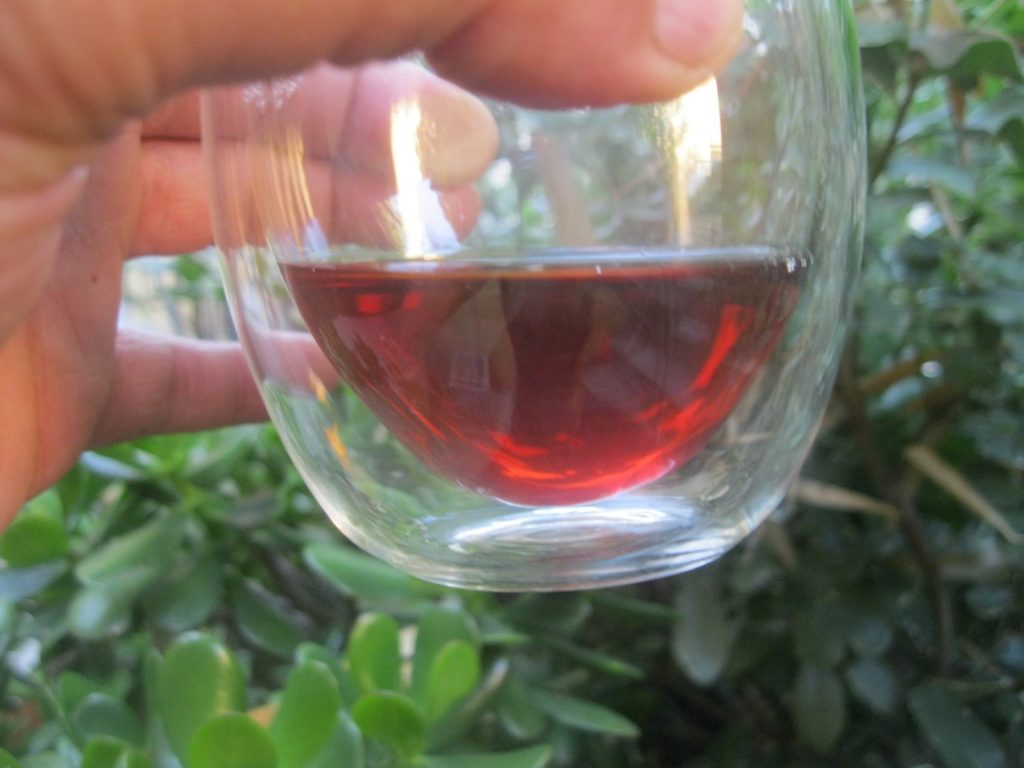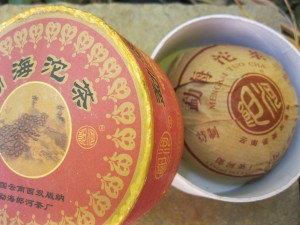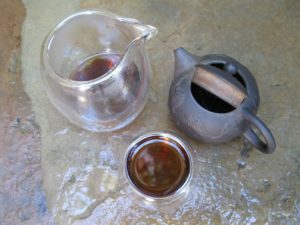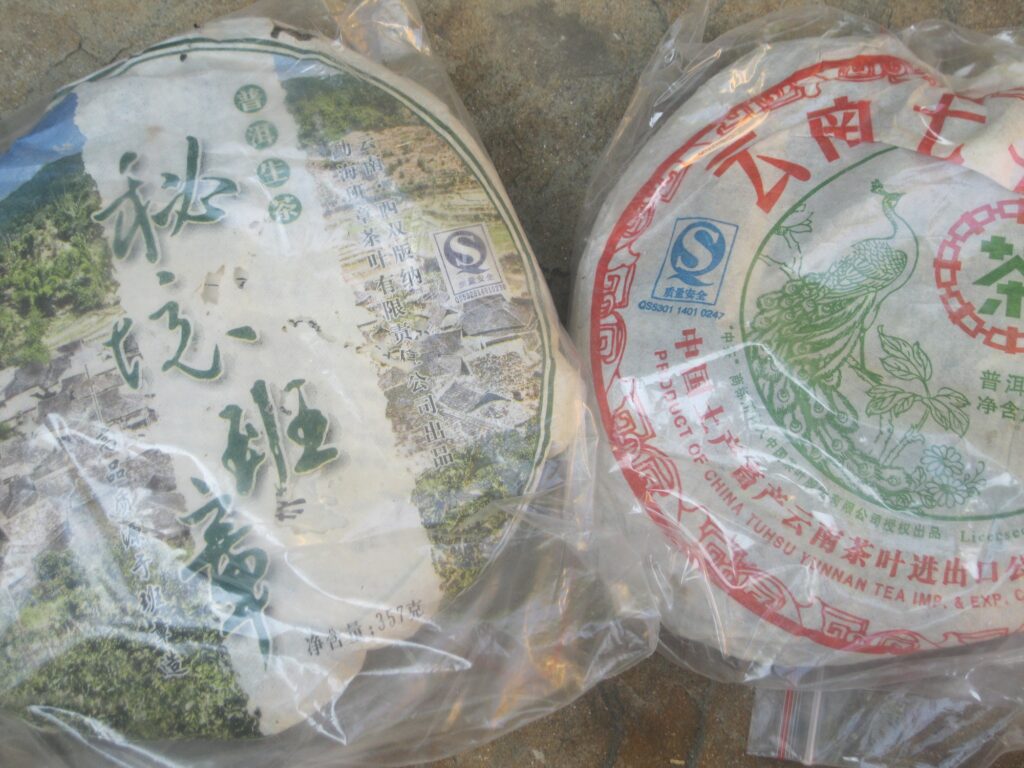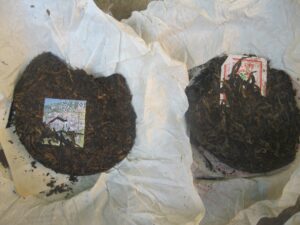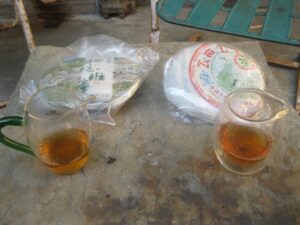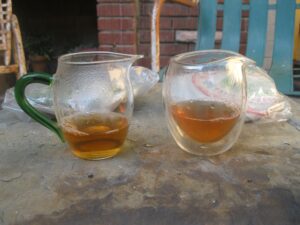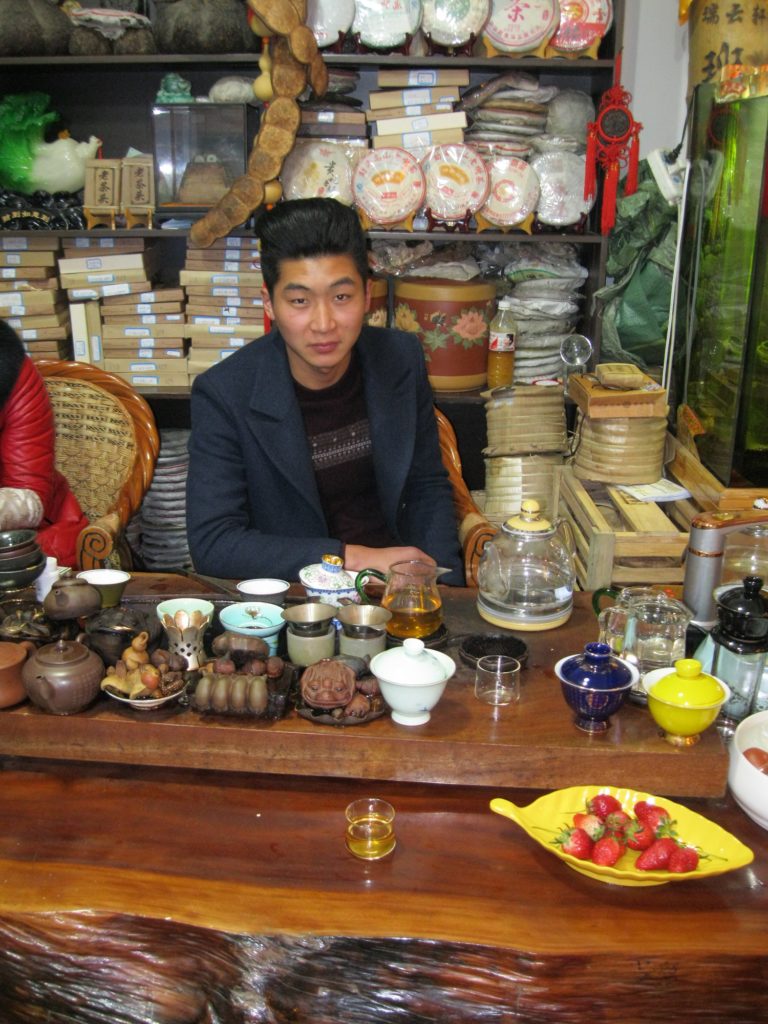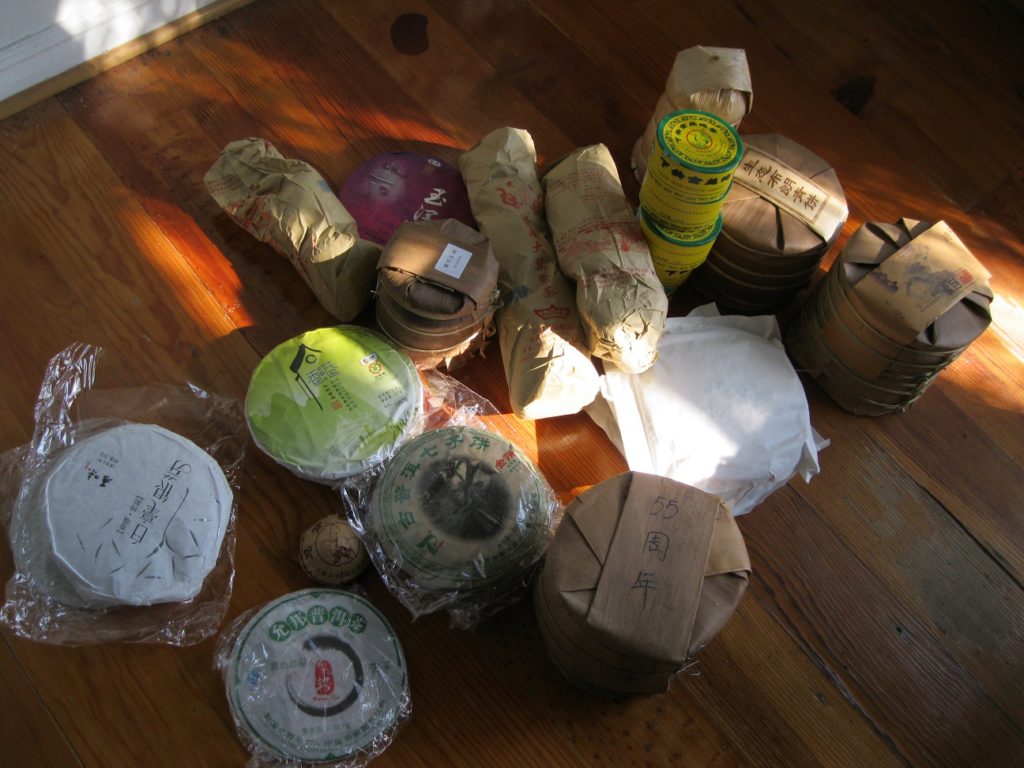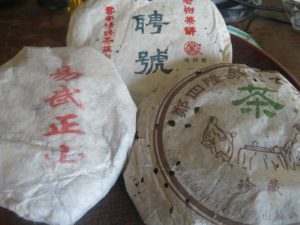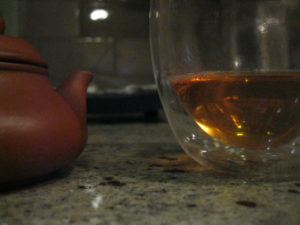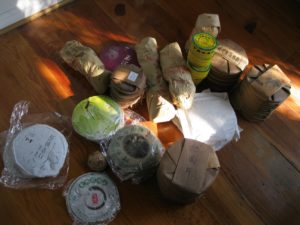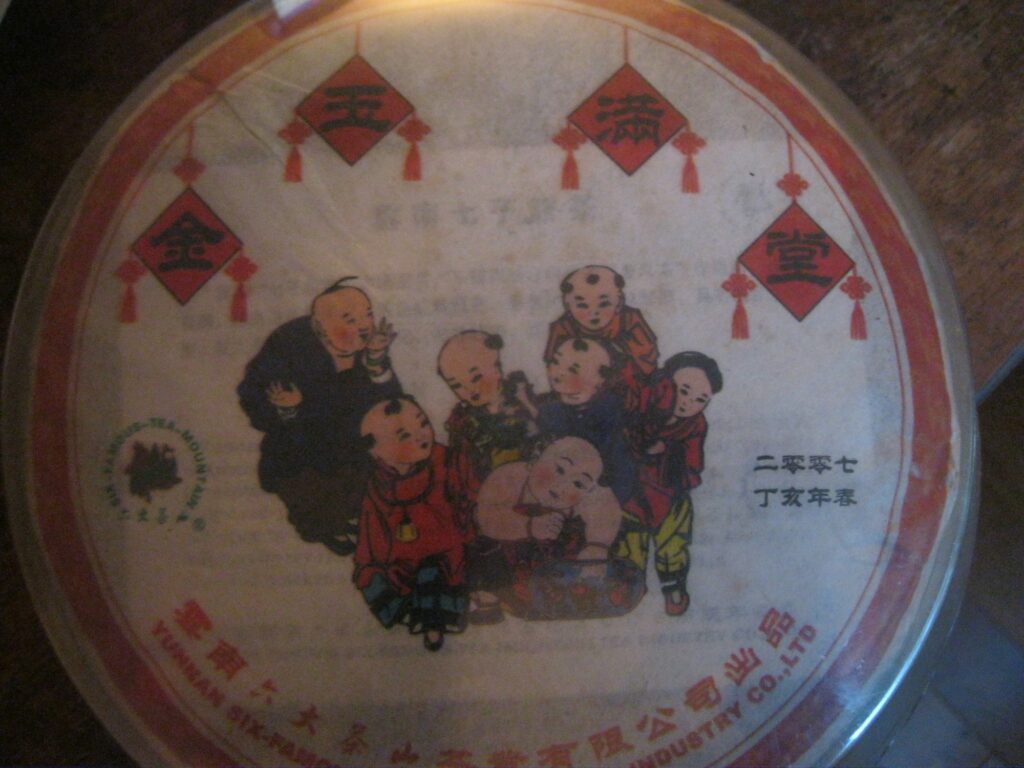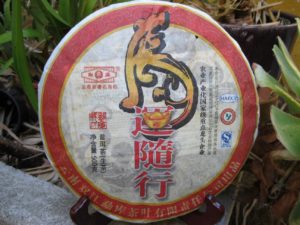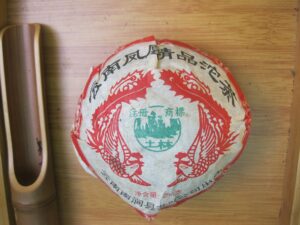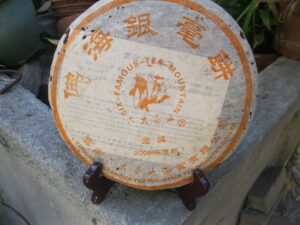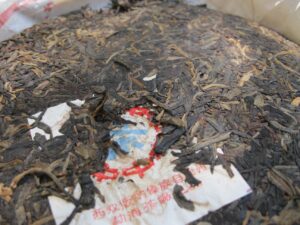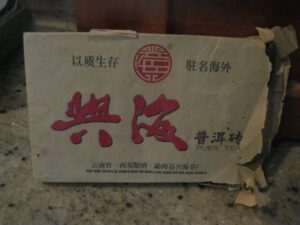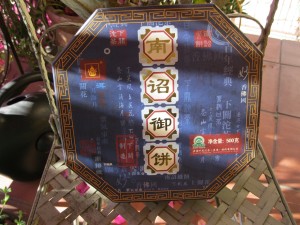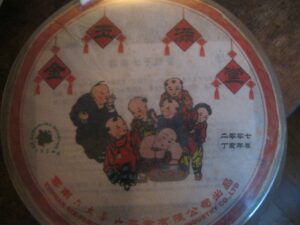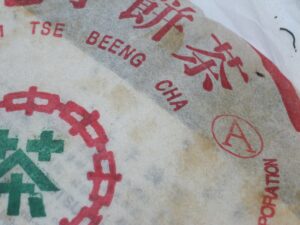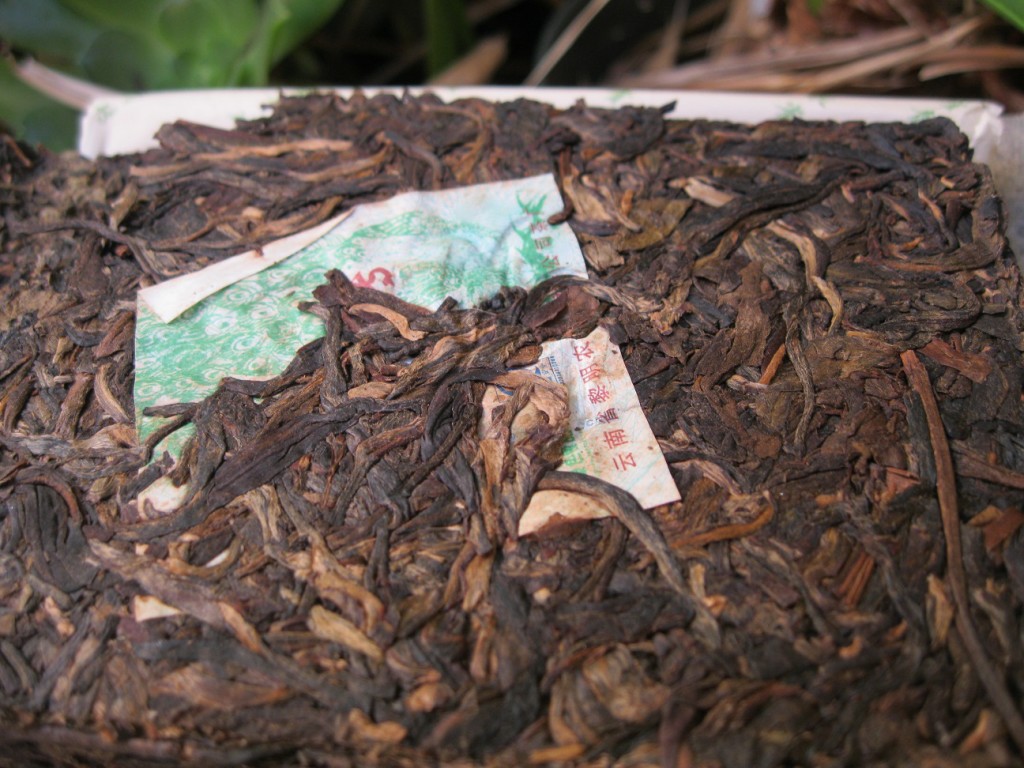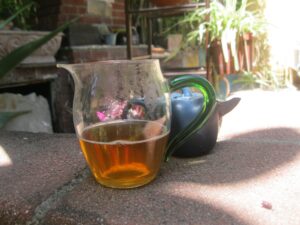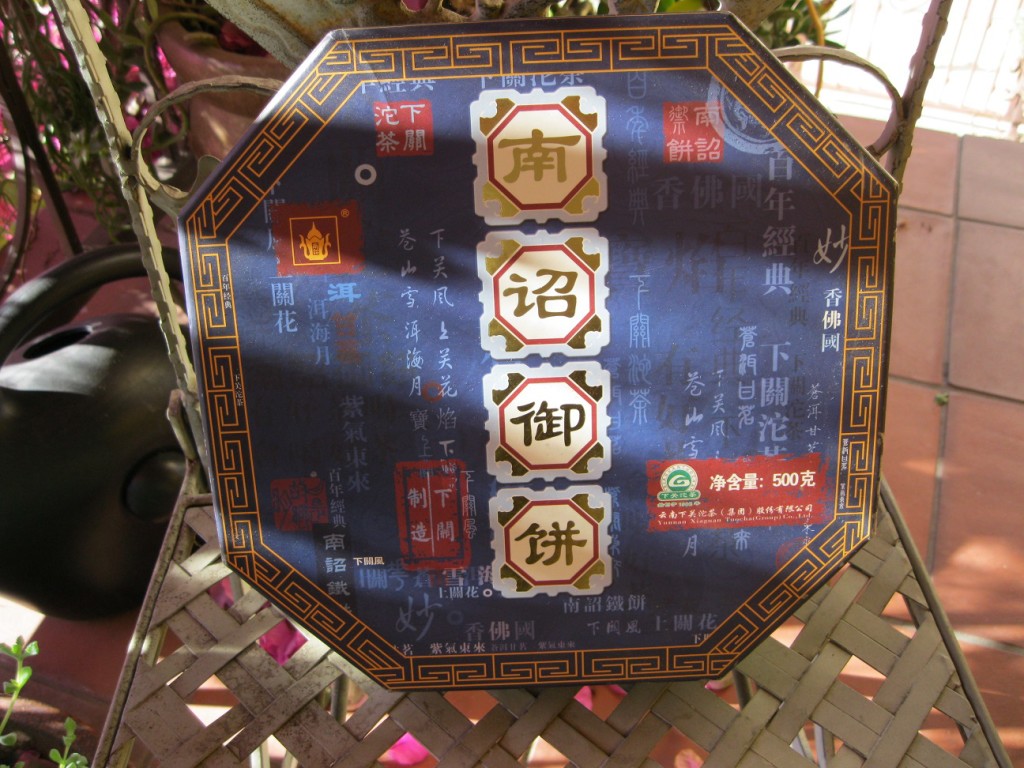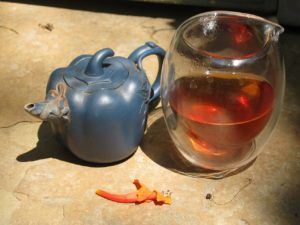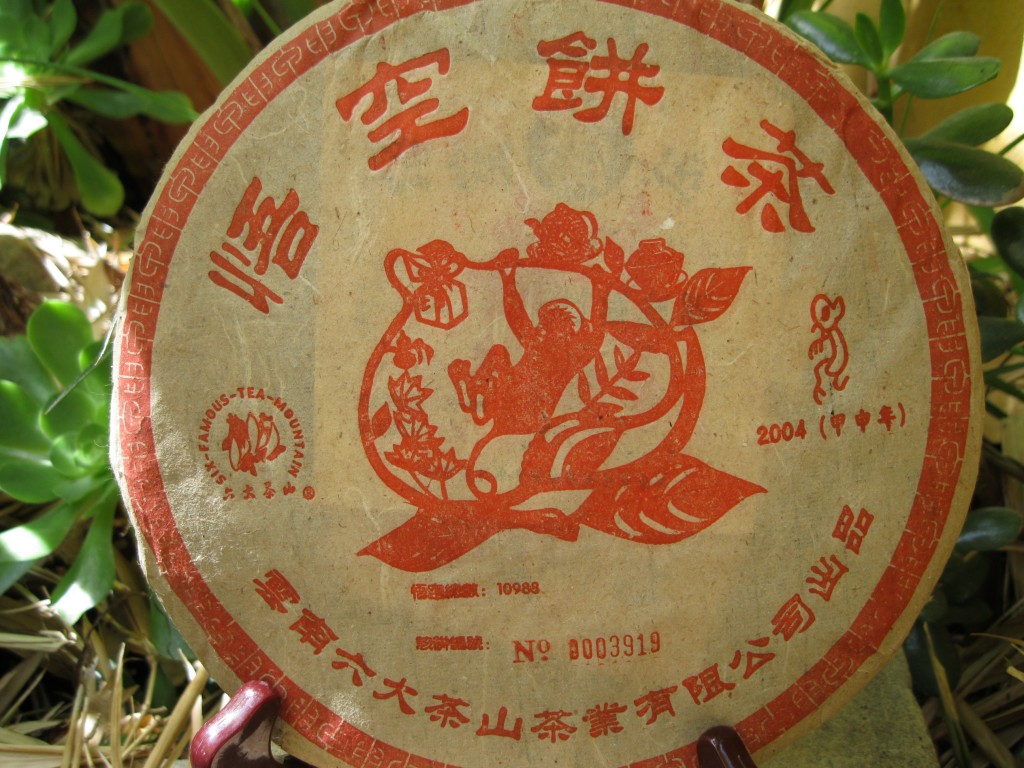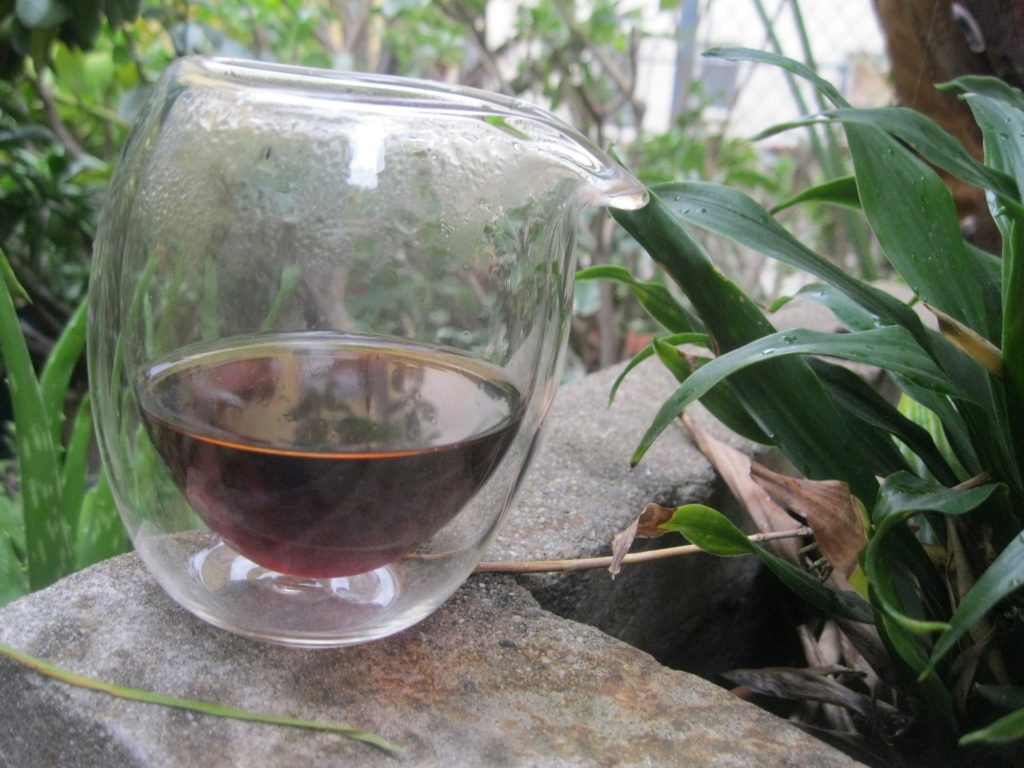Puerh Rating: AMT
The Puerh Junky Rating System (PJRS) takes on the ’07 AMT, TL 100g tuo. In my puerh junkocity, “one Tulin rating deserves another.” The Acutal Mushroom Taste (hence AMT) tuo has been on hand since at the latest early ’16. In contrast to the other two tuo from Tulin offered, it stands out for the absence of floral notes. Though its notes are lower in the range, it has shown nothing of the transformative capacity of the White Tips.
After three rounds the total was as follows:
- Aroma 10
- Clarity 8
- Sweetness 7
- Viscosity 9
- Astringency 11
- Huigan 11
- Qi 7
Reflections
The words I wrote were “bitter, vegetal, floral.” I clearly hated this experience. It performs well in terms of viscosity and astringency, and there is no single category in which it doesn’t perform solidly. Hence, it is a very well rounded everyday drinker. But I didn’t taste any mushroom.
The following day I had three very solid rounds from AMT and tasted the mushroom. Interesting. My reaction from a day earlier contradicts the introduction regarding lack of floral taste. I generally do not associate the AMT with being floral. Obviously, tastes change by the day affected by diet, climate, and context. That’s why several sessions afford a much more accurate assessment than just one or two.
Conclusions
The PJRS surprises me. By weighing the seven variables evenly, productions with a better all around performance will score higher relative much “better” puerh productions. Such is the case for the AMT. “Better” might be something purely subjective, so the rating scale helps to strip away subjective preferences around taste to simply see how the tea performs in terms of attributes that have some objective basis.
The AMT is a low risk, high reward introduction to semi-aged, semi-humid raw puerh tea. Some have found its “qi-appeal” much higher than myself. Puerh Rating RMT:
73/105, B

